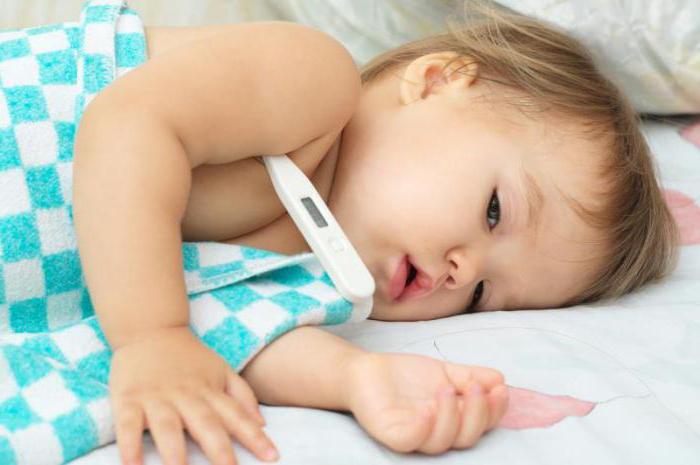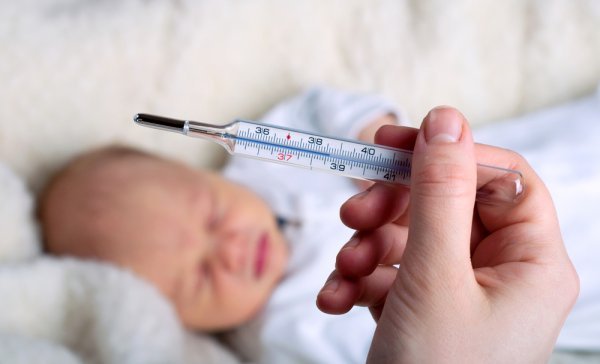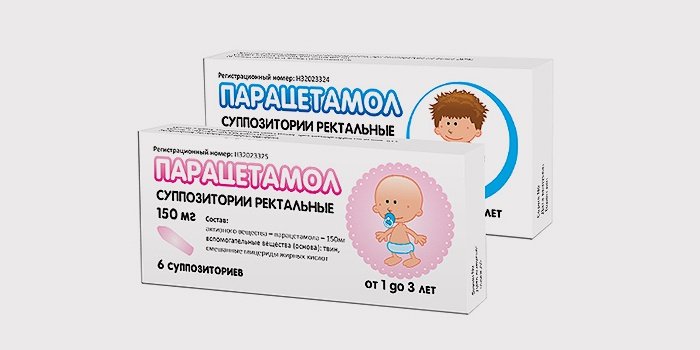How to give paracetamol to a baby with a high temperature
An elevated temperature in a newborn often becomes a reason for panic not only among young, but also among experienced parents. After all, the child is still so small, and his condition with a fever can worsen to critical in a matter of hours. Should I give paracetamol to a baby? Or is there another way to solve the problem?
To understand how to act in case of an increase in temperature, you need to know what caused it. It's one thing if the baby just overheated, and quite another - the beginning of the development of an infectious disease.
For children in the first days of life, a temperature of 37.0 - 37.5 degrees is considered normal. Literally a week later, this value shifts to the range of 36.0-37.0 degrees, and the usual 36.6 for all of us is set as the norm only after a year. This is true when measuring values in the armpit. For those who measure the baby's rectal temperature, the indicators that you should focus on will be 37-38 degrees.

If the temperature is slightly elevated and is at the upper limit of the norm, then it is possible to determine whether the baby is healthy or starting to get sick by his general condition and mood. If the baby is worried about something, he will sleep worse, cry more often. In this situation, you need to pay special attention to the development of events and regularly check if the temperature rises higher.
Reasons for the rise in temperature
Overheat
The most common reason for an increase in body temperature is overheating. Fearing to catch a cold for a fragile baby, adults are able to overdo it and create real tropics around him. It is harmful for newborn children to be in hot and stuffy rooms. In the heat, they quickly overheat, especially if the child is wrapped in diapers and cannot actively move. Swaddling delays adaptation to the outside world. It is more difficult for an infant in infancy to adapt to new conditions, it is more prone to colds precisely if it spends all the time completely immobilized with several layers of diapers.

Overheating affects the appearance and behavior of the child. Symptoms to watch out for:
- decreased activity, lethargy
- redness or blanching of the skin
- temperature above 37.5 in the armpit
Overheating is a dangerous condition for a child who is not able to regulate his temperature. In severe cases, it can lead to organ failure and death.
It is easiest to normalize the condition of the baby in this situation. It is enough to undress him to the undershirt and diaper and set a healthy temperature regime in the room. 20-24 degrees is optimal for a newborn. On a walk on a summer day, it is enough to put on a shirt and light sliders for a crumb. It is necessary to have a supply of water in a bottle with you and periodically offer the child a drink.
Infectious diseases
Fever may be a sign of an infection. With its help, the body fights viruses and microbes. Firstly, at elevated temperatures, pathogens die faster, and secondly, at 37.5-38.5 degrees, increased production of interferons in the body begins. And if such a temperature is not brought down, then recovery will occur faster and with a much lower likelihood of complications.
The infection usually has other symptoms by which it is identified. It can be a runny nose, sneezing, coughing, rash, or vomiting and diarrhea. The doctor will determine the diagnosis according to the clinical picture and prescribe the appropriate treatment. In some cases, with severe hyperthermia, the treatment of babies is possible only in a hospital, where the child's condition will be brought back to normal faster with the help of intravenous administration of drugs.
Functional States
Heat can also be caused by causes such as teething. In this case, aseptic inflammation occurs (caused by the advancement of the tooth in the gum, and not by microbes), which is not dangerous, but gives the baby inconvenience. This temperature can be knocked down if it has a bad effect on the general condition of the child. In this case, it does not carry a functional load.
How to bring down the temperature of the baby
It is very difficult to choose an antipyretic for babies on your own. Most funds have an age limit of 2 or 3 years. Consultation with a pediatrician when choosing a remedy is mandatory: doctors can calculate the dosage of the drug taking into account the weight, age and condition of the child, warn about the most common adverse reactions that occur when using a particular drug, and tell you what to do with them.

Despite the variety of antipyretics in pharmacies, most of them use one of two active substances: paracetamol or ibuprofen. In some pharmacological preparations, these components are combined.
Ibuprofen and paracetamol are usually given to infants in the form of syrup or used as rectal suppositories.
Tablets
Is it possible to give the baby pills? It is impossible to answer this question unambiguously. Of course, the tablets are intended for adults, it is difficult to calculate the correct dosage for a small weight. A tablet, even a small part of it, is not always possible for a child to swallow. It may turn out that some is swallowed, and some is not, and it is impossible to determine how much of the medicine has entered the child's body. But if the situation is critical, and there is no child's form of antipyretic, then the doctor can prescribe an adult, having calculated the correct dose.
An increase in temperature is just a sign of disorders in the baby's body. You should not declare it an enemy and try to reduce it by any means. A reasonable approach of parents to this issue will help the baby to cope with the disease faster or even prevent it.
It is worth remembering that antipyretics are not a panacea, they must be used as carefully as any other medicines. They also develop addiction, and over time, the favorite drug ceases to act. Therefore, pediatricians recommend alternating funds with different active ingredients in the composition.
